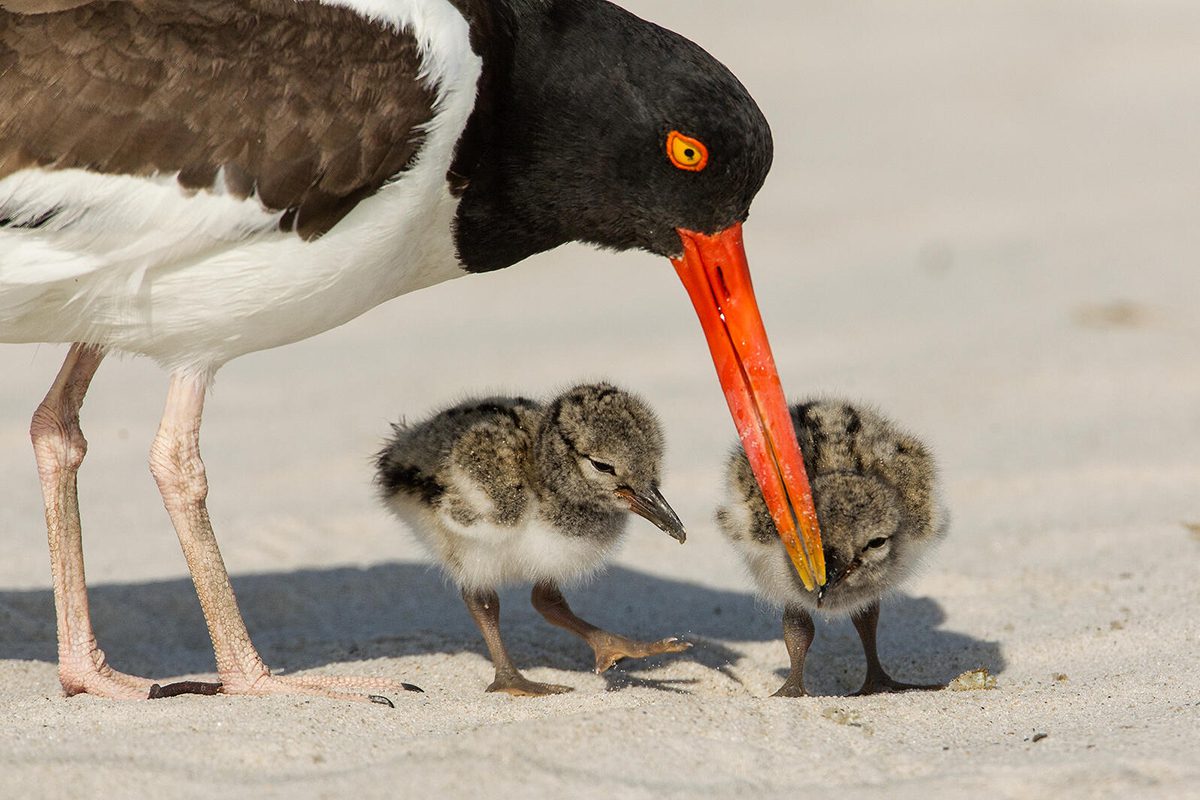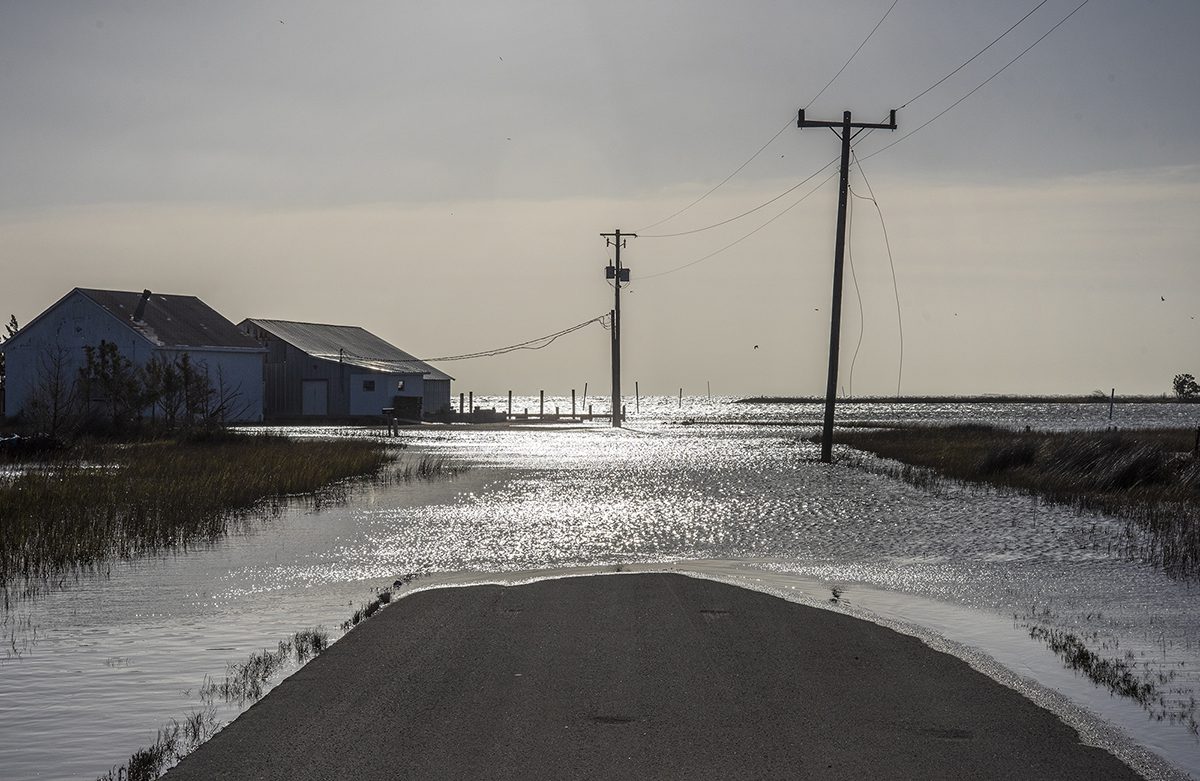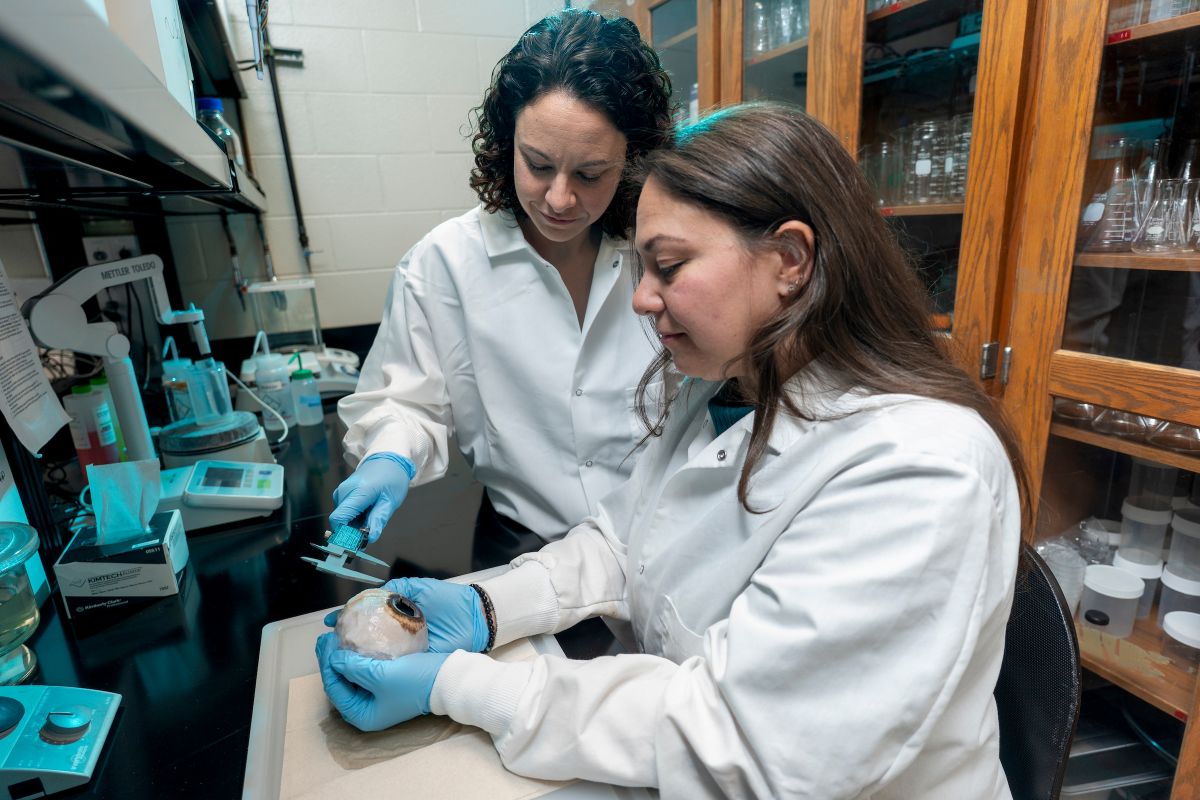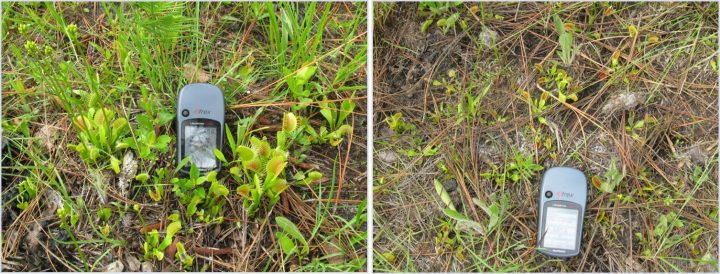
The beleaguered Venus flytrap, one of the Carolinas’ claims to scientific fame, may be on the way to a better, more protected future.
The relatively small, carnivorous plant (Dionaea muscipula) that inhabits increasingly fewer spots within southeastern North Carolina and northeastern South Carolina is being considered by the U.S. Fish and Wildlife Service for endangered or threatened status. Such a designation, its fans hope, would bring it a federally backed recovery plan that mandates periodic prescribed burns, protection of habitat in the midst of rapid coastal development and protection from poachers.
Supporter Spotlight
Twenty-six of those fans, including some of the Southeast’s most prominent botanists, petitioned the wildlife service back in 2016 for the “endangered” designation.
They were gratified in late December 2017 to learn that their petition, rather than being denied as a previous petition was, is being taken under review.
The agency has promised to evaluate both threats to the plant and efforts to counter them and is inviting the public to provide additional information at www.regulations.gov. Docket No. FWS-R4-ES-2017-0041 must be entered in the Search field. Comments can also be made in writing, using the docket number in the address, to Public Comments Processing at the agency’s office in Falls Church, Virginia.
Snap, and You’re History
The flytrap’s habit of turning insect visitors into meals has excited interest among scientists and laypeople as far back as the 1700s.
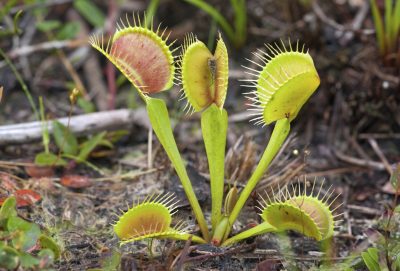
It looks like a plant, absorbs moisture like a plant, even conducts photosynthesis like a plant – but it traps and digests live prey like an animal.
Supporter Spotlight
Hapless spiders and ants are among those insects that, when they repeatedly touch a series of hairs on the inside of green-red leaves, find the leaves closing tightly over them. The “snap trap” reaction, which can take less than a second, traps them within a sort of “stomach” formed by the leaves, where enzymes start digesting them.
Charles Darwin, enamored of the plants, ordered them, begged them from friends, and tried to get them to react to non-animal materials like flour and water. Trying in vain to establish an evolutionary link to the animal kingdom, he pronounced the plant “one of the most wonderful in the world.”
The plant, which only grows naturally within 100 miles of Wilmington, sets up housekeeping in nutrient-poor soil, and scientists think that its taste for meat is an ingenious way to supplement its diet.

Its fame has long since spread beyond the scientific community, and that’s one factor leading to its presently diminished numbers. Some consider it the inspiration for the monstrous Audrey in the “Little Shop of Horrors” film.
The plants grow well in cultivation, and for years, poaching them for sale as novelties has reached the level of “a cottage industry,” said Roger Shew of the North Carolina Nature Conservancy. Shew, a geology professor at the University of North Carolina Wilmington, and his wife Dale have been studying flytraps in the Conservancy’s Brunswick County Green Swamp Preserve.
Poached plants bring from a dime to a quarter apiece, said Angie Carl, the Conservancy’s coastal fire and restoration manager. They’re sold to mom-and-pop stores, flea markets and the like.
If you want a flytrap for your home, this is one time where it isn’t wise to shop local, Carl said. “The place to buy is Walmart or the big-box stores. They’re actually getting them (legally) from tissue culture.”
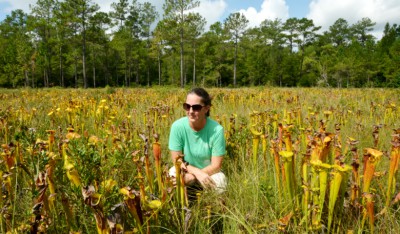
Recently, the North Carolina General Assembly, which in 2005 adopted the flytrap as the state’s carnivorous plant, took poaching out of the “misdemeanor” category, in which thieves were fined as little as $50, and declared it a felony. Two of the state’s superior courts have since weighed in with one jail sentence and two cases of hefty monetary punishment.
One man involved in poaching 970 plants from the Holly Shelter Game Land in Pender County was sentenced to from six months to 17 months’ jail time in 2016. A theft of 1,000 plants from Brunswick County’s Orton Plantation in 2015 led to nearly $2,000 in court costs, fines and fees for one man, $500 for another. In both cases, the plants were saved and replanted.
In 2017, after the Pender County jail sentence had been levied in mid-2016, Roger Shew saw poaching in his research plots drop. “Only six of 18 had some degree of poaching,” he said. Beforehand, in early 2016, it was 12 of 18.
Not the Biggest Problem
Poachers are not the flytrap’s biggest enemy, though, said Shew and the petitioners for endangered status. Ahead of them come destruction of habitat and lack of periodic fire, which clears their boggy savannas of the grass that will shade them into oblivion if left unchecked.
The Nature Conservancy’s Carl said there are now only a handful of places where the flytrap has a sizable population, and they’re all in the hands of protective organizations: the military’s Fort Bragg and Camp Lejeune; the conservancy-managed Green Swamp Preserve; the Croatan National Forest in Carteret County; and the state’s Holly Shelter Game Land, which is managed by the N.C. Wildlife Resources Commission.
It’s in other southeastern counties, which historically had only scattered populations of flytraps, that their loss is most apparent. Looking at a map, Carl can tick off counties where flytraps once had a presence, but no more: “Duplin, Robeson, Lenoir” … and so on.

Donald M. Waller, professor of botany and environmental studies at the University of Wisconsin-Madison, the chief author of the petition, said that the population sites still around “are in Fort Bragg and hugging the coast. Those in between are not there.”
In 1968 there were 259 sites in 21 counties, he said. Now it’s down to 12 counties and 179 sites. “We’ve lost essentially almost half from a generation ago.”
Petitioners besides Waller include Sir Peter Crane, a former dean of the Yale School of Forestry and Environmental Studies and a former director of the Royal Botanic Gardens in Kew, London.
With flytraps in short supply for scientific study, Darwin once asked a friend to approach the Kew director “and ask him whether he could lend me a plant.” He’d return the plant with some alterations, he said. “I should require to gather and dissect some leaves.”
Some of the other petitioners include Robert Peet, University of North Carolina Chapel Hill professor of biology; John Randall, director of the North Carolina Botanical Garden in Chapel Hill; Peter Raven, former president of the Missouri Botanical Garden; Alan Weakley, director of the UNC Herbarium; Peter White, UNC professor and executive director of the American Public Gardens Association; and William Morris, Duke University biology professor.
This month, a delegation from the group is set to visit southeastern North Carolina to see the plants for themselves and to see, Waller said, if there was anything they could do for the plant while awaiting USFWS action. The visits set for May 20-22 include Fort Bragg, the Green Swamp Preserve, Shaken Creek Savanna Nature Preserve in Onslow and Pender counties and Holly Shelter Game Land in Pender County.
Friends Are Off-Limits
Even though no special link has been pinned down between the flytrap and the animal kingdom, scientists think the plant still has a lot to teach them.
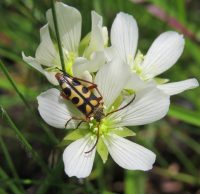
Research at North Carolina State University, in which scientists from USFWS and the UNC Botanical Garden collaborated, revealed earlier this year that the flytraps don’t eat the insects that pollinate them.
They have no compunction about gobbling up a spider but say “no thanks” to their most common pollinators, a green sweat bee, a checkered beetle, and the notch-tipped flower longhorned beetle.
Researchers theorized that these pollinators, all of whom can fly, visit only the plant’s white flowers, which soar above the deadly snap trap below. It’s the creepy-crawlies that get caught.
Although, says their paper, published in the American Naturalist, it may be that different parts of the plant give off different scents or enticing chemicals. “There is still a lot to learn about these plants and their pollinators,” said Rebecca Irwin, NCSU professor and co-author of the study.
Their fellow scientists hope a U.S. Fish and Wildlife designation will help them do just that. “Around the world there are scientists who have done research on this plant that care deeply about preserving it for future generations,” said Waller.




